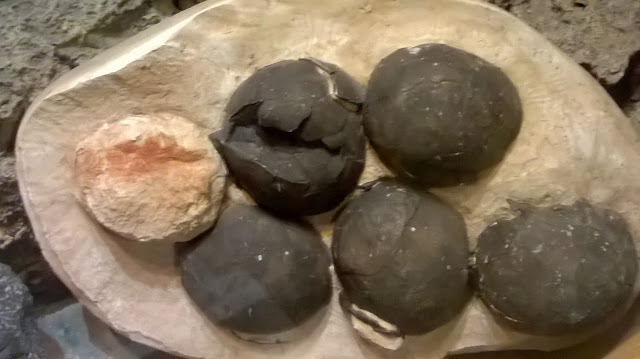Since moving to Derbyshire, Matlock Bath has become one of our favourite places to visit. It’s like the seaside but without the sea, (although there is the river, and a lovely big sandpit at the “ship park” where the kids can while away many a happy hour,) and with ice cream in the secret garden, the delightful “alternative” clothing shop, and plenty of lovely walks, it’s a full and fabulous day out.
One of our very favourite haunts there however, is the aquarium. The kids love the big fish, I love the collection of gem stones, and we all spend a good long while admiring the wonders of the petrifying well.
The process is simple but impressive; the water from the thermal spring is rich in a variety of minerals, in particular calcium from the local limestone. As the water evaporates, a deposit of calcium carbonate slowly builds up; over time, this turns the objects within the water to stone.
People have visited Matlock Bath to watch this wonder for centuries, and visitors today can still see the well in action, along with a selection of items that have been petrified over the years.
Objects petrified by the well at Matlock Bath
It is the only remaining working well in Matlock Bath. Victorian Matlock Bath boasted several “dripping wells” and items such as wigs, birds nests and brooms were petrified and sold to visitors!
The 1868 publication “On Foot Through the Peak” describes the petrifying industry at Matlock Bath:
“Petrification working, as it is called, has become an important, and certainly not the least lucrative branch of the “curiosity” business at Matlock, there being several wells in the tufa, [I.e a porous rock composed of calcium carbonate and formed by precipitation from water] where this curious and interesting operation of nature is carried on. The process of incrustation is an exceedingly simple one, the articles to be operated on (embracing almost every conceivable object, but chiefly birds’ nests, baskets of fruit, moss, and the leaves and branches of trees) are placed on stands, and the water that filtrates through the tufa allowed to drip gently upon them; the moisture in percolating through the concrete mass becomes strongly impregnated with lime, and on reaching the open air, rapidly evaporates when a calcareous deposit is formed that in time completely encrusts the object on which it falls, and gives to it the appearance and hardness of stone.”
The pipe through which the water passes to the well.
The eight year old Elizabeth Barrett was inspired by a visit to Matlock Bath in 1814 to write a poem, with the following reference to the well:
We quit this shadowy cave with vapours hung,
And joy to see the beauteous glowing day,
The rocks, woods, waters, all in bright array,
Then running, tumbling down the hill,
New wonders rise, our thoughts to fill,
Papa so ever kind, our joys to swell,
Led us to see the petrifying well,
Where heads, wigs, baskets, eggs, lie on the ground
Soon turned to stone, in dropping waters drowned.
Farewell, farewell, ye scenes of joy so sweet,
All other joys lie humbly at thy feet.
Matlock Bath has drawn visitors for centuries, and shows no sign of ceasing to be popular. One of the things I am always asked to take a photo of when we visit is the not petrified, but equally fascinating collection of dinosaur eggs.
Then there is the giant amethyst, the ammonites, and to mention the impressive collection of Minor, Common and Koi Carp enjoying the waters of the old therapeutic baths that the town is named for. In short, if you happen to be in the Derbyshire area, Matlock Bath is well worth a visit!
Because you can’t end a day at Matlock Bath without chips.







